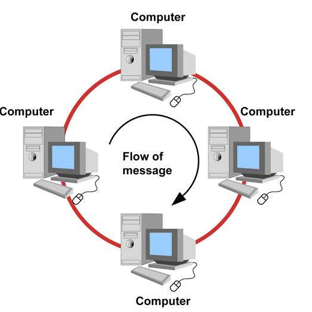The term Network Topology defines the Geographic, Physical, or logical arrangement of computer and networking devices.
The pattern of the interconnection of nodes on a network is called the topology.
FACTORS for choosing a Topology of a network are:-
- Cost: which offers minimum installation cost based on the network under consideration.
- Flexibility: Can offer easy move of existing nodes and adding new ones.
- Reliability: Offers least failure.
BUS TOPOLOGY-:
Advantage -:
- Easy to connect a computer.
- Requires less cable length.
- Failure of one node does not affect the network functioning.
Disadvantage -:
- The entire network shuts down if there is a break in the main cable.
- Terminators are required at both ends.
- Difficult to identify the problem.
- Nodes must be intelligent.
RING TOPOLOGY -:
Advantage -:
- Short cable length
- The possibility of collision is minimum
Disadvantages -:
- One node causes network failure
- It is very difficult to diagnose faults
- Network reconfiguration is difficult.
STAR TOPOLOGY -:
- Easy to install.
- No disruptions to the network when connecting or removing devices.
- Easy to detect faults and to remove parts.
Disadvantage -:
- Requires more cable length than a BUS/RING topology.
- If the hub or concentrator fails, the nodes attached are disabled.
- More expensive than linear bus topologies because of the cost of the concentrators.
MESH TOPOLOGY -:
- It is robust.
- Provides security and privacy.
- The fault is diagnosed easily.
Disadvantage -:
- The cost to implement is higher than other network topologies.
- Installation and configuration are difficult.
TREE TOPOLOGY -:
- A tree topology combines characteristics of linear BUS and STAR topologies.
- Inverted tree-like structure.
- It consists of groups of star-configured workstations connected to a linear bus backbone cable.
Advantage -:
- Point-to-point wiring for individual segments
- It is highly flexible
- Centralized monitoring
Disadvantage -:
- If the backbone line breaks, the entire segment goes down.
- It is difficult to configure the network if there is a single point of failure.
- More wire is required than other topologies.
HYBRID TECHNOLOGY -:
- A hybrid topology is an integration of two or more different topologies to form a resultant topology.









No comments:
Post a Comment